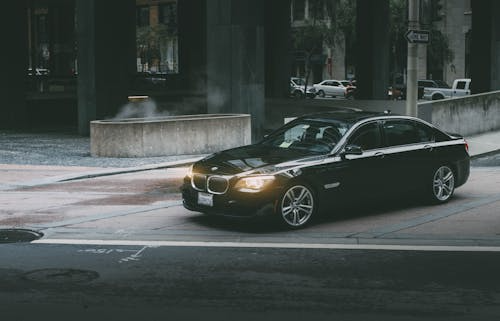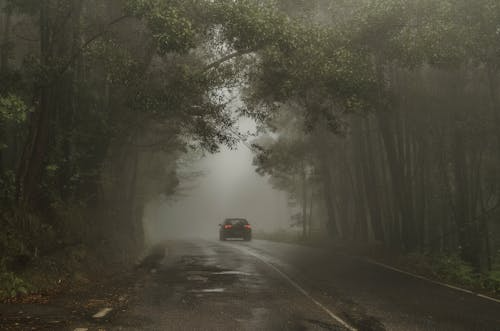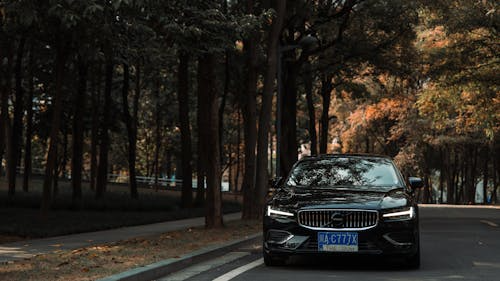In the Fog, How to Find Your Clear Vision
Bliauto—In the Fog: How to Find Your Clear Vision: expert manufacturing of fog lights and brand manufacturers of fog lights delivering durable brand fog lights for superior visibility and safety. Explore specs and solutions.
- 1. Fog and Visibility: The Invisible Threat in Driving
- 1.1 Formation and Impact of Fog
- 1.2 Common Problems in Foggy Conditions
- 2. The Role of Fog Lights: Cutting Through the Fog and Illuminating the Way
- 2.1 Differences Between Fog Lights and Regular Headlights
- 2.2 How Fog Lights Work
- 2.3 Types and Applications of Fog Lights
- 3. BLIAUTO’s Fog Light Technology: Making Driving Safer and Clearer
- 3.1 Unique Design of BLIAUTO Fog Lights
- 3.2 Integration with Intelligent Systems
- 4. Frequently Asked Questions About Fog Lights
- Conclusion: Cutting Through the Fog, Driving Toward the Future
Introduction: The Challenges and Opportunities in the Fog
With the rapid urbanization and increasing traffic pressures, air pollution and safety on the roads have become daily concerns. Particularly in foggy and hazy weather, not only does the air quality deteriorate, but it directly impacts road safety. In such conditions, the visibility of drivers is significantly reduced, leading to difficulties in recognizing road conditions and predicting the actions of other vehicles. Traditional lighting systems often struggle to effectively address these challenges, making traffic accidents more likely.
Fortunately, with continuous advancements in technology, fog lights have emerged as an essential feature in modern cars. These lights, designed specifically to handle poor visibility, enhance safety by providing clearer illumination. So, how can drivers find their "clear vision" in the fog? Fog light technology, BLIAUTO’s innovations, and the future of this technology offer effective solutions to this challenge.

1. Fog and Visibility: The Invisible Threat in Driving
1.1 Formation and Impact of Fog
Fog is formed by the condensation of water vapor and the presence of fine particulate matter in the air, such as dust, smoke, and pollutants. These microscopic particles scatter light, severely reducing visibility. Not only does fog harm air quality, but it also significantly impacts driving safety. In thick fog, visibility can be reduced to just a few meters, making it difficult for drivers to identify road signs, vehicles, or any obstacles ahead, greatly increasing the risk of accidents.
In such weather conditions, drivers are often forced to slow down, maintain a longer following distance, and rely more on their vehicle’s lighting systems to improve visibility. However, traditional vehicle lighting systems typically fail to cut through dense fog, making it hard to ensure a safe driving experience.
1.2 Common Problems in Foggy Conditions
In foggy weather, drivers encounter several problems:
Reduced Visibility: Fog makes distant objects hard to see, and vehicles, road signs, and obstacles may become nearly impossible to distinguish.
Light Reflection Interference: The headlights of other vehicles, particularly high beams, can cause intense glare when reflected off foggy air, further impairing the driver’s vision.
Obscured Road Surface: Road markings, traffic signs, and other obstacles may be hidden by the fog, making it difficult for drivers to stay on course or react in time to hazards.
These issues demonstrate that simply relying on conventional headlights and driving techniques is insufficient for ensuring clear vision in foggy weather. Drivers need specialized solutions to effectively navigate such challenging conditions.
2. The Role of Fog Lights: Cutting Through the Fog and Illuminating the Way
2.1 Differences Between Fog Lights and Regular Headlights
Fog lights are designed differently from regular headlights, such as low beams and high beams. While regular headlights are designed for long-distance illumination, fog lights are optimized to address poor visibility caused by fog, snow, or rain. Conventional headlights often reflect off the fog or mist, making the situation worse, whereas fog lights are specifically engineered to avoid such issues.
Fog lights are typically mounted lower on the vehicle and cast a wider, more horizontal beam. This design helps minimize light reflection and provides better illumination of the road directly in front of the vehicle, including road markings and any potential obstacles.
2.2 How Fog Lights Work
Fog lights function through the following key features:
Low Position Installation: Fog lights are usually installed near the lower part of the vehicle, close to the ground. This placement minimizes light reflection and ensures that the light is cast onto the road surface, enhancing visibility.
Wide Beam Angle: Fog lights have a broader beam angle, covering a larger area in front of the vehicle. This allows drivers to see the road surface more clearly, including lane markings and obstacles.
Yellow Light: Most fog lights use yellow or amber-colored bulbs, as yellow light has a longer wavelength and is less likely to scatter in foggy conditions compared to white light. This helps improve visibility by reducing glare and enabling the light to penetrate the fog more effectively.
These design features make fog lights a crucial tool for improving road visibility in low-visibility conditions.
2.3 Types and Applications of Fog Lights
Halogen Fog Lights: Traditional halogen fog lights are widely used due to their affordability and established technology. While they have lower brightness compared to newer technologies, they can still provide sufficient penetration in light fog or mist.
LED Fog Lights: LED fog lights are becoming more popular due to their higher brightness, energy efficiency, and longer lifespan. They offer superior performance in foggy conditions by delivering brighter and more consistent illumination.
Laser Fog Lights: Laser technology is the latest innovation in fog lights. Laser fog lights offer even stronger penetration, illuminating longer and wider distances, which is especially useful in dense fog.
Different types of fog lights can be selected based on specific driving needs, providing drivers with optimal visibility in various weather conditions.

3. BLIAUTO’s Fog Light Technology: Making Driving Safer and Clearer
3.1 Unique Design of BLIAUTO Fog Lights
BLIAUTO, as a leading brand in automotive lighting, is committed to improving driving safety and comfort through innovative fog light technology. With a focus on "cutting-edge technology and top-tier safety," we have developed a range of fog lights that meet various driving needs, ensuring clear visibility in any weather.
Smart Beam Angle Adjustment: BLIAUTO’s fog lights feature an intelligent beam adjustment system, which automatically adjusts the light angle and intensity based on real-time weather and road conditions. For example, when thick fog is detected, the system enhances the beam width and strength to ensure better visibility.
Efficient LED Lighting: BLIAUTO fog lights use high-efficiency LED bulbs, which offer higher brightness, longer lifespan, and lower energy consumption compared to traditional halogen lights. LED fog lights deliver stronger illumination, making them ideal for adverse weather conditions.
Anti-Reflection Technology: With advanced optical design, BLIAUTO fog lights minimize light reflection, preventing glare and ensuring that the road ahead remains visible even in challenging conditions.
3.2 Integration with Intelligent Systems
As autonomous driving and smart technologies continue to evolve, BLIAUTO fog lights are not only a standalone feature but are also integrated with other intelligent systems such as automatic emergency braking, lane-keeping assistance, and collision avoidance. By seamlessly working with onboard systems, BLIAUTO fog lights can adapt to changing environmental conditions, further enhancing the driving experience.
For example, when the system detects obstacles or nearby vehicles, the fog lights automatically adjust their range and intensity, ensuring optimal visibility without disturbing other drivers.
4. Frequently Asked Questions About Fog Lights
Can Fog Lights Replace Low Beams or High Beams?
Fog lights are specifically designed to improve visibility in foggy, rainy, or snowy conditions, but they are not intended to replace regular headlights. Low beams and high beams remain the primary light sources for everyday driving. Fog lights are a supplemental feature that provides additional visibility when needed.
When Should Fog Lights Be Used?
Fog lights should be used in low-visibility conditions such as fog, heavy rain, or snowstorms. In particularly dense fog, they significantly improve the driver’s ability to see the road ahead and detect any obstacles or other vehicles.
How Should Fog Lights Be Maintained?
Regular maintenance of fog lights is essential to ensure their effectiveness. This includes checking for damage or dirt buildup on the lenses. Keeping the fog light surfaces clean will prevent dirt or debris from obstructing the light beam. Additionally, for LED fog lights, ensure that the cooling system is functioning correctly to avoid overheating and extend their lifespan.
Do All Vehicles Need Fog Lights?
While fog lights are not mandatory in every vehicle, they are highly recommended for drivers in areas with frequent fog, rain, or snow. Installing high-quality fog lights improves safety, especially in regions where weather conditions can significantly reduce visibility.

Conclusion: Cutting Through the Fog, Driving Toward the Future
Foggy weather presents a significant challenge for drivers, but with the advancement of technology, we now have effective solutions to address this issue. Fog lights, as a key innovation in automotive lighting, help drivers find their clear vision in the fog, improving road safety and overall driving experience. BLIAUTO’s cutting-edge technologies, including intelligent beam adjustment and efficient LED lighting, are pushing the boundaries of what is possible in driving visibility.
Looking ahead, with further integration of smart systems and the continued evolution of autonomous driving technologies, fog lights will continue to advance. In the future, we expect fog lights to not only offer better visibility but also to work in tandem with other safety features, providing a more seamless and intelligent driving experience.
At BLIAUTO, we are dedicated to delivering safe, efficient, and innovative lighting solutions that help every driver navigate the fog and reach their destination safely.
Learn more about our automotive lighting products.

Bliauto Motorcycle Headlight - Model C1H-WA: High-quality LED design from leading brand manufacturers of motorcycle headlights. Precision Manufacturing Motorcycle Headlight ensures high visibility, durability, and easy fit for all riders.

Bliauto Motorcycle Headlight - Model C1H-HL: High-quality brand motorcycle headlight with durable LEDs, easy installation, and high-beam performance. Trusted brand manufacturers motorcycle headlights for safety. Choose Manufacturing Motorcycle Headlight quality.

Bliauto JS1 Jump Starter – Reliable Power On-the-Go As a brand manufacturer & wholesale jump starter supplier, Bliauto delivers high-quality portable power solutions. The JS1 Jump Starter provides instant engine starts, USB charging, and durable performance—ideal for emergencies. Trusted by professionals, it’s compact, safe, and backed by expert engineering. Wholesale options are available—power up with Bliauto! Optimized for SEO with target keywords while maintaining clarity and brand authority. Let me know if you'd like refinements!

The Bliauto Jump Starter - Model JS2 delivers reliable power on demand. As leading brand manufacturers of jump starter specialists, we offer high-quality, durable units. Perfect for wholesale jump starter needs, our manufacturing jump starter ensures safety and efficiency in every use.
Connect with Bliauto for Automotive LED Lights Solution
Bliauto is dedicated to designing innovative automotive LED lighting systems. Let's talk about your needs!
© 2025 Bliauto All Rights Reserved.








Bliauto
Bliauto Light
Bliauto
Bliauto Light
Bliauto
Whatsapp: +8618811846160